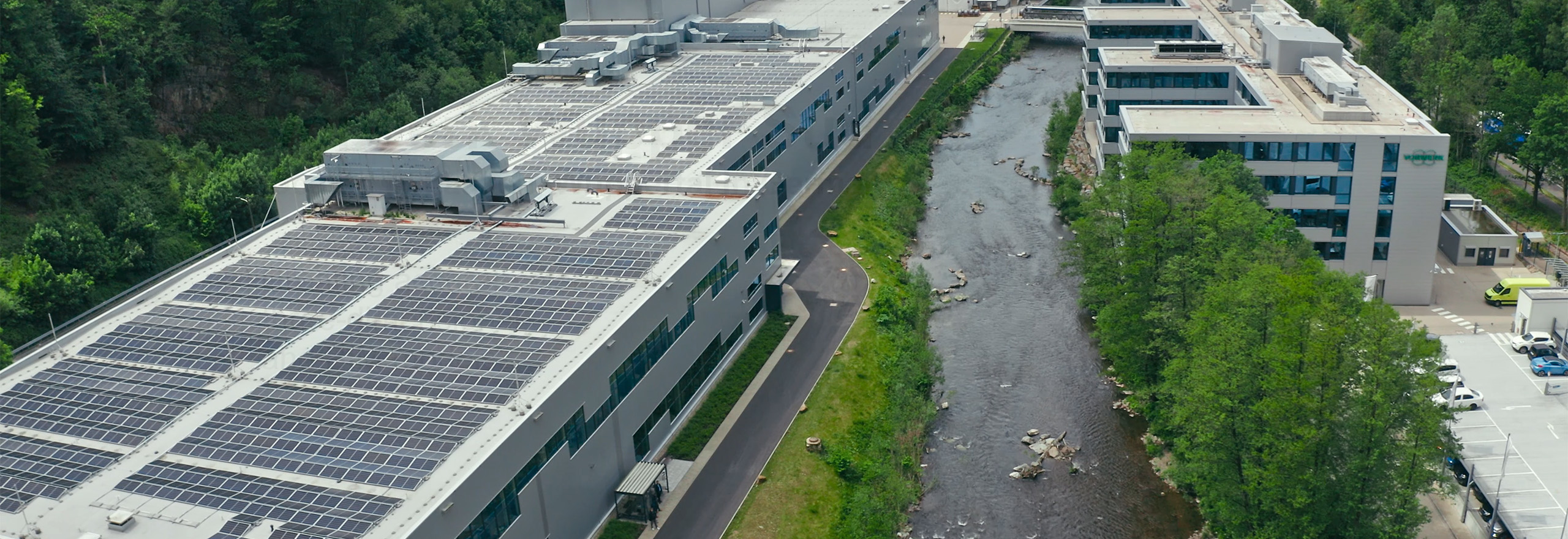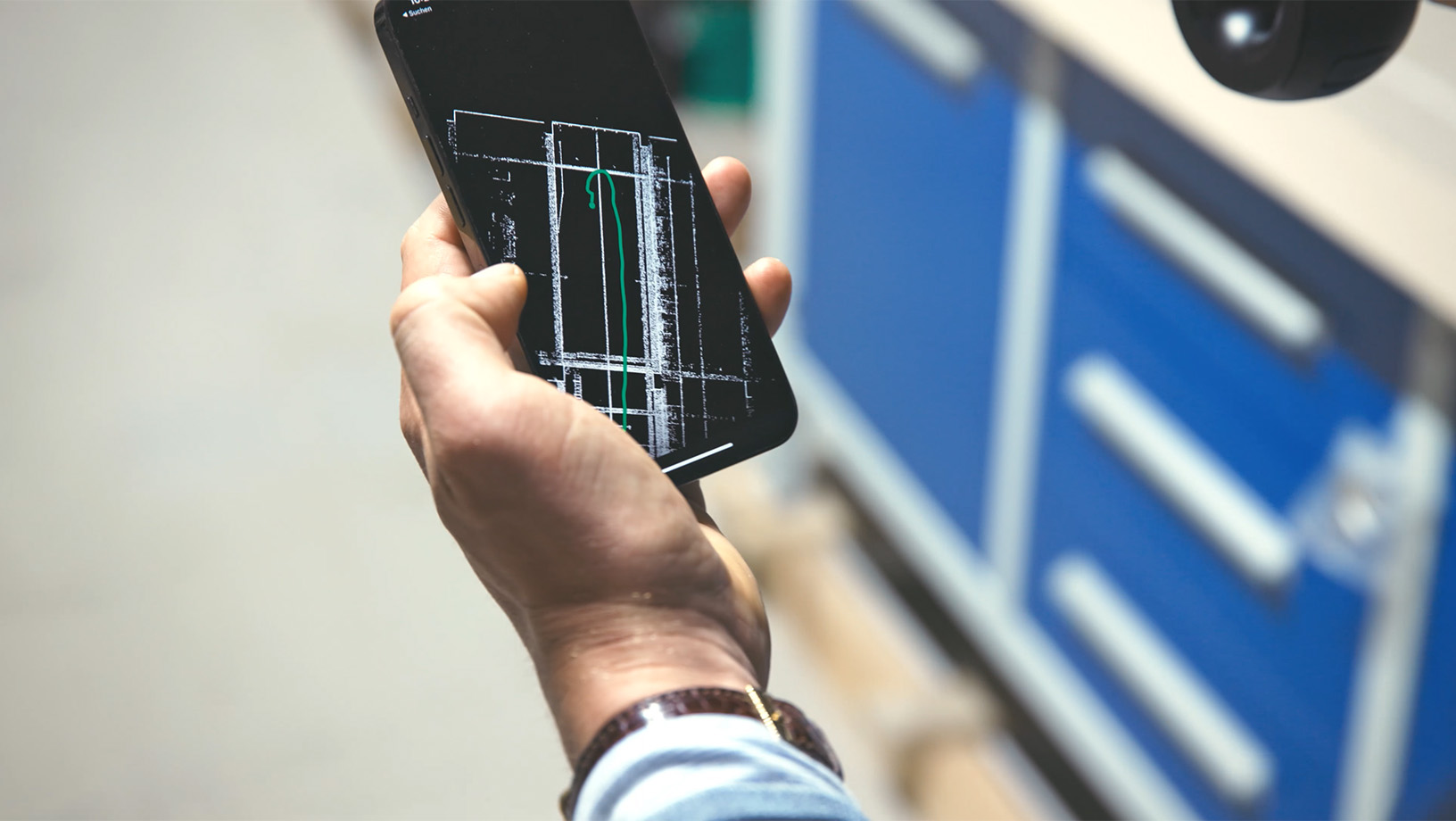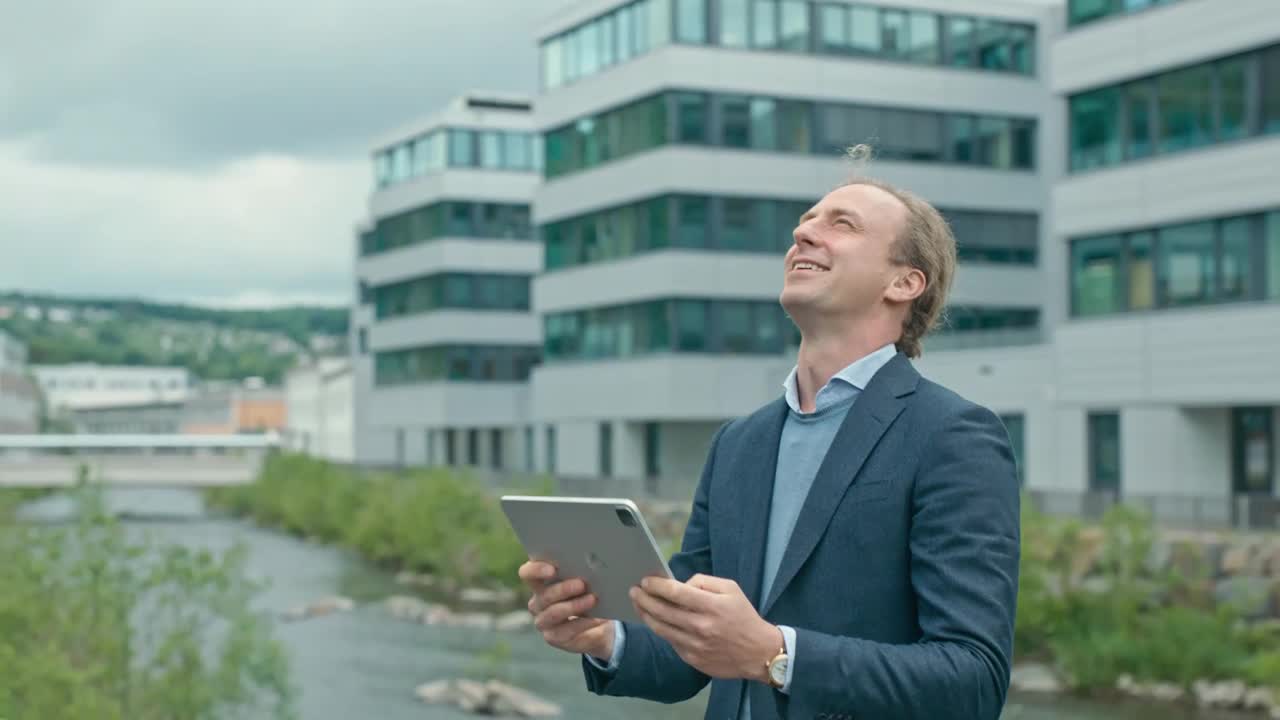Easily create a digital twin with a scan-to-plan workflow

To create a digital twin, a Scan-to-Plan workflow is an efficient option to complete the task within a short time.
The Vorwerk Wupper Süd in Laaken, Germany, is a family-owned company with more than 130 years of history. They create and produce high-quality appliances to improve the lives of their customers. Their two new facilities, an engine plant with 23,000 square metres (m2) and a research facility with 17,000 m2, enhanced their engineering and production capabilities. After completing the construction of the facilities, the architectural company Jan-André Meyer Architects was tasked to create a digital twin.
Jan-André Meyer Architects was founded in 2010, with its office in Cologne, Germany. A team of two scanned both facilities within five hours with a Scan-to-Plan workflow using the BLK2GO and BLK2FLY. With the completed scans, the exported point clouds could be processed to create an accurate floorplan of the facilities and a 3D model that can be viewed on a computer and in virtual reality (VR).
“To scan such extensive facilities, you need efficient and precise technology to complete a scan within a short time. For this project, the BLK2GO and BLK2FLY were the perfect fit to create accurate point clouds for 2D and 3D deliverables,” said Meyer.
Capturing large-scale facilities within hours – using only two people

The construction of the new Vorwerk Wupper Süd facilities with 40,000 m2 was done within four years. Once completed, Meyer and his team could start creating a digital twin of both buildings with a Scan-to-Plan workflow. To do so, he used the BLK2GO to scan the interior and parts of the landscape around the facilities. Based on their experience with the BLK2GO from previous projects, in addition they chose to use the BLK2FLY to scan the exterior.
They started with the exterior of the Vorwerk Wupper Süd and planned the flight path of the BLK2FLY with the mobile application. Some parts of the exterior were scanned manually to ensure nothing was missed, and there was no need for a second scan. Both buildings were autonomously captured in 12 flights, taking them only four hours to complete.

Meyer said about the scanning process: “I could scan the interior with the BLK2GO by simply walking through the building and capturing the entire facility in high resolution. Its size allows you to capture even very tight spaces. And the live tracking function of the BLK2GO mobile application is great, as it allowed me to see my progress and check if everything necessary was scanned.”
Benefits of a digital twin and how this affects future projects

The next step of the Scan-to-Plan workflow is to process the captured data from the BLK2GO and BLK2FLY and create the deliverables. With the Vorwerk Wupper Süd data captured, Meyer could return to his office. Importing the data via USB-C cable to the BLK version of Cyclone Register 360 is a speedy process. Once imported, the data could be combined into one point cloud of the entire Vorwerk. Within two and a half weeks the floorplan and 3D model of the Vorwerk Wupper Süd were created.
For this project, 2D floorplans and a 3D model were created for the customer, so that they have the data quickly at hand in the future if needed. The accurate deliverables make it a lot easier for upcoming projects to be designed, planned and executed, as the contractors have all the necessary data digitally available. Since this data can be sent directly to the contractor, they have no need to visit the site personally, as they can use the floorplans or even walk through the facilities on their computer or use a VR headset to examine it.
After completing the assignment Meyer said: “A solid Scan-to-Plan workflow saves a lot of time for the client as well as partners if changes or additions are planned for the Vorwerk Wupper Süd using accurate 2D and 3D deliverables of the facility. This allows us to plan and execute projects easily in the future, so there are no surprises during construction.”
This Scan-to-Plan workflow enables better planning and saves everyone involved time and money, as the digital twin can be used as an accurate basis for the project.
